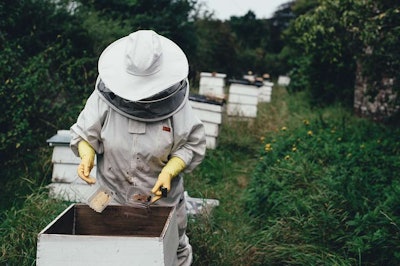
The preliminary results of the annual nationwide survey conducted by the Bee Informed Partnership shows that from April 2016 to April 2017 beekeepers lost 33 percent of their honeybee colonies.
These total annual losses, along with summer loss and winter loss, are an improvement compared to last year. Last year’s annual loss rates made multiple headlines with beekeepers losing 44 percent of their hives, while over the winter they lost 28 percent of their colonies.
The total annual losses are the lowest they’ve been since 2011-12, while the winter loss of 21 percent is at its lowest level since 2006-07 when the survey started.
The U.S. government has a goal of keeping winter loss under 15 percent, but this has yet to be met since the survey has begun.
“While it is encouraging that the losses are lower than in the past, I would stop short of calling this ‘good’ news,” Dennis vanEngelsdorp, an assistant professor of entomology at the University of Maryland and project director for the Bee Informed Partnership told Phys.org. “Colony loss of more than 30 percent over the entire year is high. It’s hard to imagine any other agricultural sector being able to stay in business with such consistently high losses.”
The survey asks for both commercial and small-scale beekeepers to track their hives’ survival rates. From all 50 states and the District of Columbia, more than 4,900 responded to the survey. These beekeepers manage about 13 percent of the nation’s 2.78 million honeybee colonies.
While it has been known that there are multiple factors affecting the bees’ health, some of the top problems have been parasites and diseases, with the varroa mite in particular.
“Many backyard beekeepers don’t have any varroa control strategies in place,” Nathalie Steinhauer, a graduate student in the University of Maryland Department of Entomology who leads the data collection efforts for the annual survey, told the Bee Informed Partnership. “We think this results in colonies collapsing and spreading mites to neighboring colonies that are otherwise well managed for mites. We are seeing more evidence to suggest that good beekeepers who take the right steps to control mites are losing colonies in this way, through no fault of their own.”
In the fall months of 2016, it was noted that the mite levels were lower than in past years. Researchers suspect that this is thanks to greater beekeeper vigilance and proper control measures. Also, mild temperatures across the country allowed certain control products to last longer than normal.
Researchers admit that the matter is complex and there are still multiple ways to improve, including poor nutrition and pesticide exposure.
“Bees are good indicators of the health of the landscape as a whole,” Steinhauer told Phys.org. “Honeybees are strongly affected by the quality of their environment, including flower diversity, contaminants and pests. To keep healthy bees, you need a good environment and you need your neighbors to keep healthy bees. Honeybee health is a community matter.”











